Une racine artificielle
Qu’est ce qu’un implant ?
L’implant dentaire est l’une des solutions pour remplacer une dent manquante ou compromise par un traumatisme, une infection ou une maladie parodontale. Il s’agit d’une racine artificielle le plus souvent en titane biocompatible placée dans l’os maxillaire servant de base pour la fixation de couronnes unitaires, de bridges sur plusieurs dents ou comme ancrage pour des prothèses dentaires complètes.
L’implant dentaire est une tige en métal constituée de titane se présentent sous différentes formes et sous différentes tailles afin de s’adapter aux besoins et à la pathologie de chaque patient. Ils peuvent mesurer entre 10 à 15 mm de long. Cette grande diversité permet de garantir une intégration parfaite de l’implant pour obtenir la meilleure résistance et la meilleure longévité à l’implant. Pour éviter les risques de rejet, les implants sont composés de matières compatibles avec l’organisme humain comme le zircone ou le titane. Ils permettront aux cellules de l’os de venir naturellement s’y souder. Le titane est mécaniquement très résistant et bien adapté à la pression provoquée par la mastication.
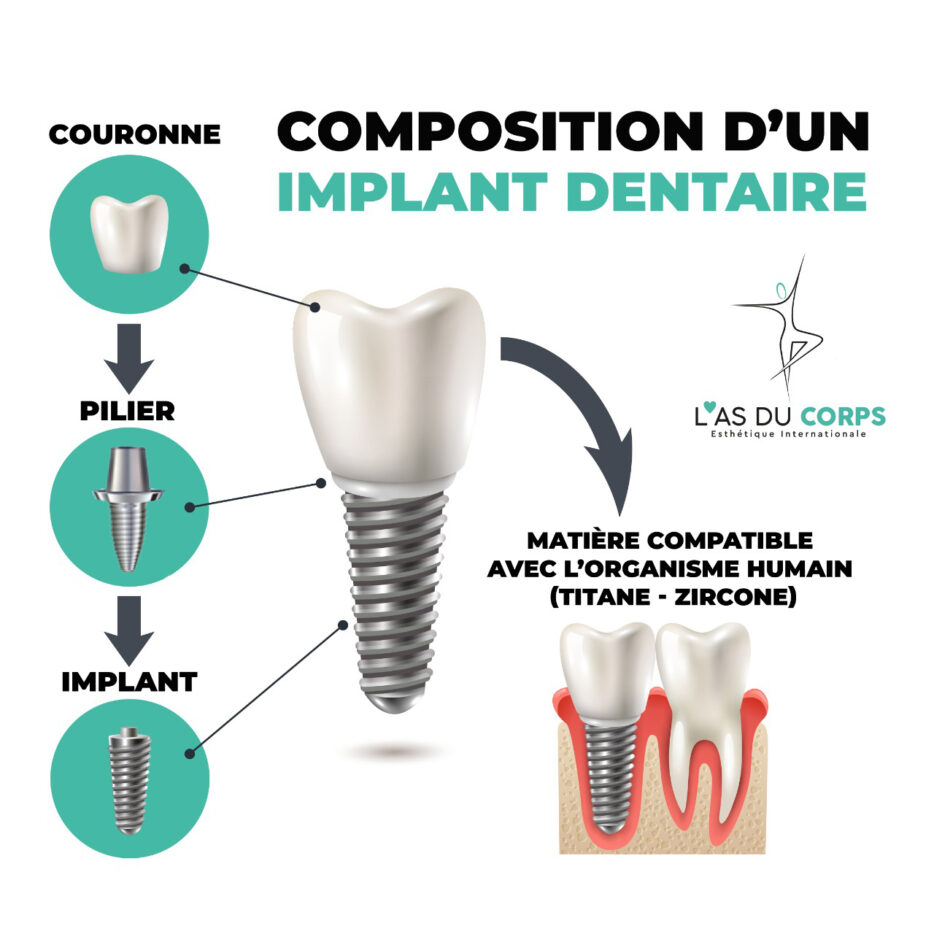
Les avantages d'un implant
Nos dents naturelles favorisent la préservation de la solidité et de la santé de l’os. Les forces que nous générons lorsque nous mâchons sont transmises à l’os par les racines des dents, ce qui stimule le maintien de la densité osseuse.Après la perte d’une dent, l’os au niveau de l’espace vide ne reçoit pas cette stimulation et peut commencer à se résorber lentement. Au fil du temps, cette résorption osseuse peut modifier la forme du visage. Les implants dentaires transmettent les forces de mastication à l’os de la mâchoire ce qui permet de conserver une mâchoire saine et donc de préserver la structure du visage et le support facial (lèvre).
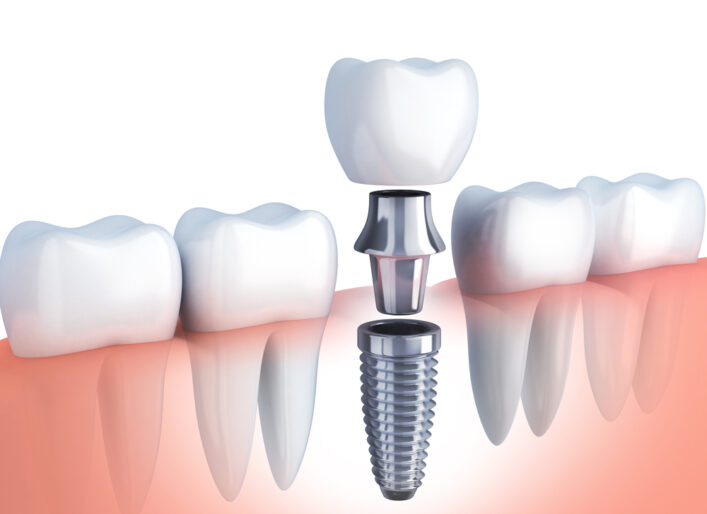
Plus qu'une restauration dentaire, l'implant permet de retrouver une meilleure qualité de vie tant fonctionnelle que sociale. Les implants permettent aux gens de mordre, de mâcher et de parler sans dépréciation ni gêne en toute confiance quand il faut interagir avec les autres, qu’il s’agisse d’une discussion professionnelle, amicale ou familiale.
Ils minimisent également toute perte osseuse dans la région de la mâchoire où ils sont placés, ce qui contribue à préserver le support facial (lèvre) et ainsi votre apparence et à maintenir la structure de l'os de la mâchoire.
L'implant sélectionné par L'As du corps
Nous travaillons avec plusieurs marques reconnues mondialement dont la marque Straumann, garante de la qualité suisse haut de gamme. Straumann se positionne comme leader mondial en implantologie en offrant des innovations de pointe, elle a aujourd’hui gagné la pleine confiance du secteur de la dentisterie grâce à la fiabilité, la stabilité et la résistance de ses matériaux.
Les solutions prothétiques et implantaires de dernière génération offrent une longévité inégalée. Elles sont plus stables, plus confortables et plus fonctionnelles que les prothèses classiques.
La durée de vie d’un implant dépasse les 25 ans, mais elle dépend de la réussite de sa pose, de la santé de vos gencives mais aussi de votre hygiène bucco-dentaire.
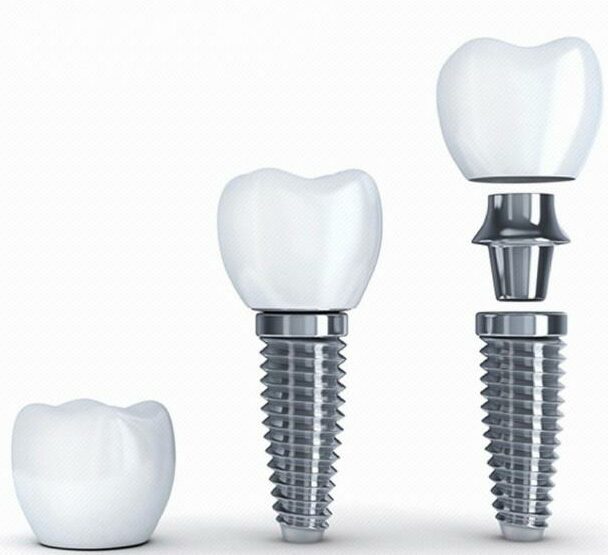
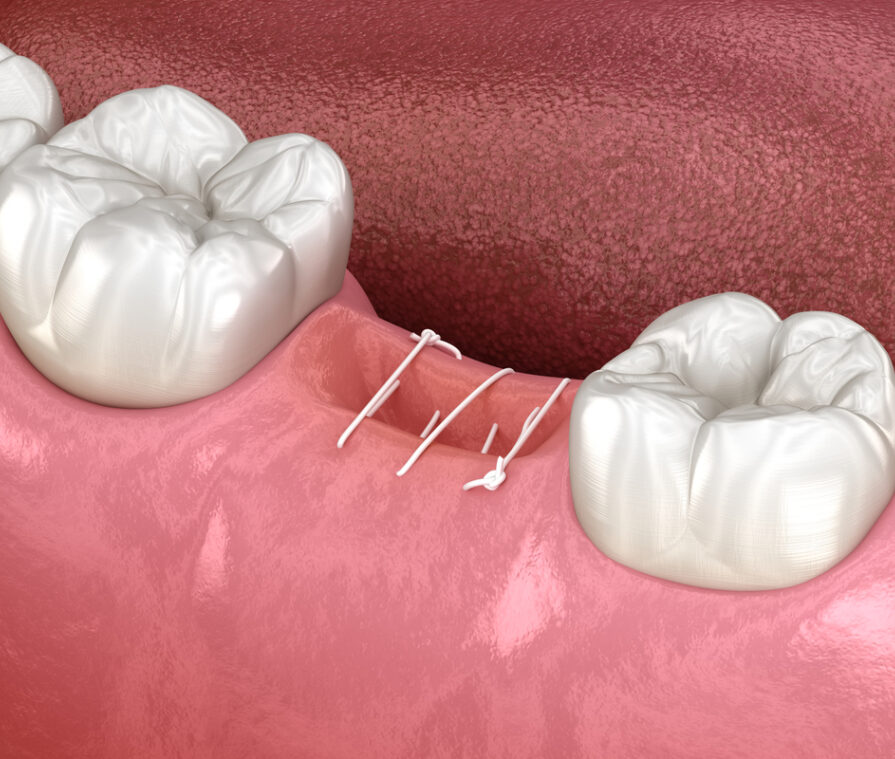
La cicatrisation
Après la pose de l’implant, il est nécessaire d’attendre que la mâchoire cicatrice. C’est la phase d’ostéo-intégration, qui peut durer de 3 à 6 mois, selon les cas. Elle permet à l’os de se reformer, et de se fixer à l’implant dentaire de manière plus solide et durable. La période de cicatrisation peut durer plusieurs semaines avant que l’implant soit complètement fixer à l’os de votre mâchoire, il est important de respecter les consignes post-opératoires afin d’optimiser cette cicatrisation et éviter l’échec.
Pendant cette phase de cicatrisation, le chirurgien peut proposer au patient une couronne provisoire qui permettra de combler l’espace libre, afin de préserver l’esthétisme du sourire.
Pour poser un implant il est parfois nécessaire de faire une greffe osseuse afin d’avoir la bonne épaisseur d’os.
Des microchirurgies PARFOIS nécessaires : greffe osseuse et augmentation du sinus
Lorsqu’il vous manque une dent, l’arrêt de stimulation osseuse crée une résorption. L’épaisseur de l’os de la mâchoire devient insuffisante pour recevoir un implant dentaire. Une greffe osseuse devient alors nécessaire pour la pose d’un ou plusieurs implants dentaires afin d’assurer sa solidité. Pour être fixé, l’implant a besoin d’une épaisseur d’os minimale de 6 millimètres.
Il arrive parfois que les sinus maxillaires descendent si bas qu’il est impossible d’effectuer une pose d’implant. Il est donc nécessaire de corriger la hauteur et la largeur osseuse. Le chirurgien dentiste procède alors à l’élévation sinusale puis à la greffe osseuse afin de combler les sinus.
Le greffon osseux peut être prélevé sur le patient lui même (greffon autogène), sur une autre personne de la même espèce via la banque d’os (greffon allogène), sur une autre espèce en générale bovine (greffon xenogène) ou provenant de matériau synthétique (greffon alloplastique).
Ces interventions sont indolores et sont effectuées sous anesthésie locale pour un meilleur confort.
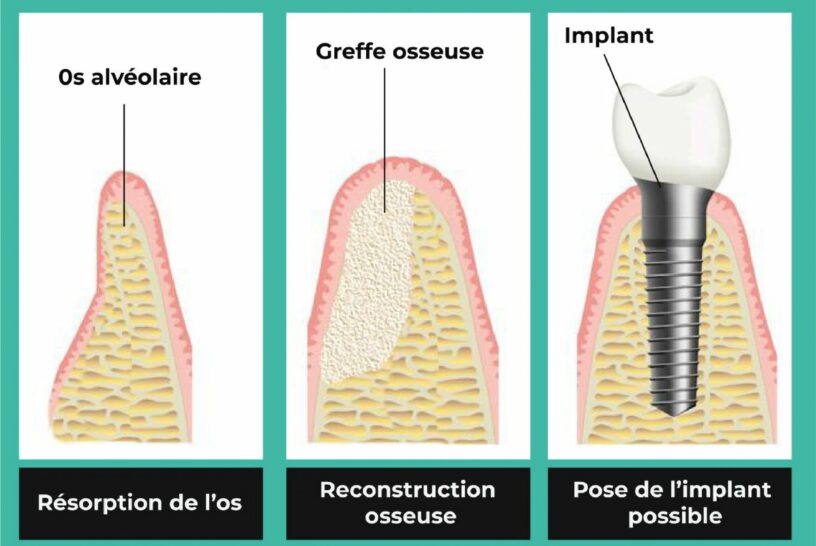
Le séjour
Il faudra compter généralement 3 jours sur place à Istanbul afin de poser votre ou vos implants. Une seule et même journée est dédiée aux chirurgies éventuelles et à la pose d’implant. Toutefois, si une extraction complète des dents est envisagée, le chirurgien peut vous proposer une prothèse provisoire dont la fabrication nécessitera quelques jours supplémentaires. Il en est de même si une dent du sourire doit être arrachée. Un coordinateur médical vous donnera dans ce cas tous les détails.
Alors N’attendez plus
pour être de nouveau en confiance
et vous offrir le confort d’autrefois !

